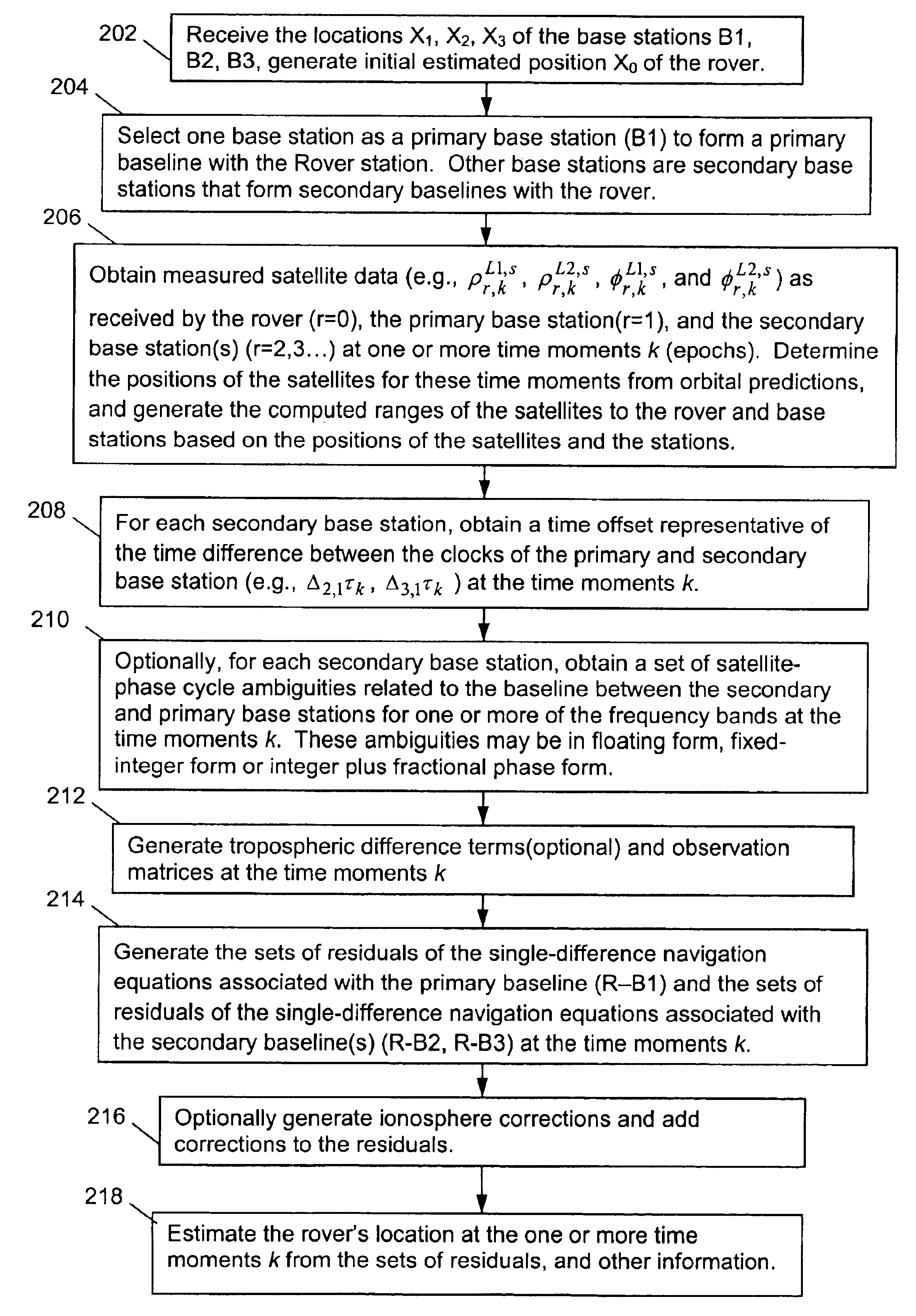Position estimation using a network of a global-positioning receivers
network technology, applied in the field of positioning estimation using a global positioning receiver network, can solve the problems of reducing difficult for civilian users to achieve accurate, and inability to access the most accurate parts of the satellite signal, so as to increase the accuracy of estimating the rover's position, maintain or improve the accuracy of the rover's position estimation, and increase the spacing between the rover and the base station
- Summary
- Abstract
- Description
- Claims
- Application Information
AI Technical Summary
Benefits of technology
Problems solved by technology
Method used
Image
Examples
embodiment implementations
[0114]Having thus described three general groups of embodiments, we now describe an exemplary rover station 100 in FIG. 5 that may be used to implement any of the above-described embodiments. A description of rover station 100 is provided in conjunction with a flow diagram shown in FIG. 6. Referring to FIG. 5, rover 100 comprises a GPS antenna 101 for receiving navigation satellite signals, an RF antenna 102 for receiving information from the base stations, a main processor 110, an instruction memory 112 a data memory 114 for processor 110, and a keyboard / display 115 for interfacing with a human user. Memories 112 and 114 may be separate, or different sections of the same memory bank. Rover 100 further comprises a satellite-signal demodulator 120 for generating the navigation data ρ0,kL1,s, ρ0,kL2,s, φ0,kL1,s, and φ0,kL2,s for each epoch k from the signals received by GPS antenna 101, which is provided to processor 110. Rover 100 also comprises a base-station information demodulator...
PUM
 Login to View More
Login to View More Abstract
Description
Claims
Application Information
 Login to View More
Login to View More - R&D
- Intellectual Property
- Life Sciences
- Materials
- Tech Scout
- Unparalleled Data Quality
- Higher Quality Content
- 60% Fewer Hallucinations
Browse by: Latest US Patents, China's latest patents, Technical Efficacy Thesaurus, Application Domain, Technology Topic, Popular Technical Reports.
© 2025 PatSnap. All rights reserved.Legal|Privacy policy|Modern Slavery Act Transparency Statement|Sitemap|About US| Contact US: help@patsnap.com



